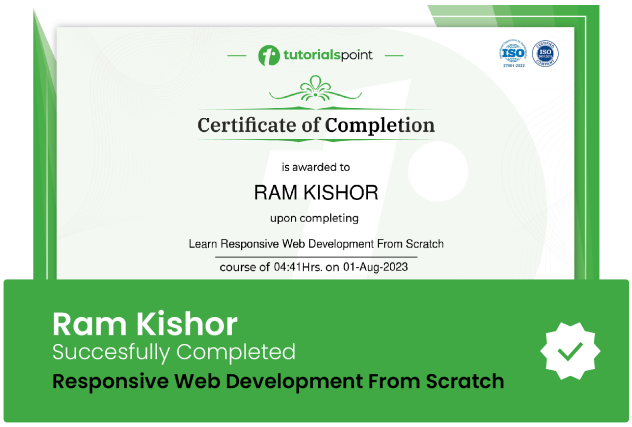Complete Linux Mastery Online Course
Understand master Linux from scratch with comprehensive online training

Lectures -123
Resources -1
Duration -4.5 hours

30-days Money-Back Guarantee
Get your team access to 10000+ top Tutorials Point courses anytime, anywhere.
Course Description
Linux is a powerful and versatile operating system that is used by millions of people around the world. It is a popular choice for servers, cloud computing, and embedded systems.
The course also includes several hands-on projects that you can build to practice your skills.
Complete Linux Mastery Online Course Overview
By enrolling in this course you will be able to understand the basics of Linux and use the Linux command line effortlessly. The course will teach you how to manage files and directories and write shell scripts. You will also learn how to administer Linux systems, configure networks, and secure Linux systems.
Topics discussed in the course:
- Background & Introduction
- Linux Installation
- QuickStart
- About Files and the File System
- Processes
- Input and Output Redirection
- Communicating Utilities used in Linux
- Print & Email
- Text Editors
- Linux Virtual Terminals
- The Linux System Administration Basics
- Commands
This course is perfect for:
Anyone who wants to learn Linux
System administrators
Network engineers
DevOps engineers
Security engineers
Anyone who wants to work with Linux
Goals
What will you learn in this course:
You should have enough knowledge by the end of the course to install, run, and manage the Linux OS in the majority of its distributions with ease.
both the command line and a graphic interface to access and manage the Linux operating system.
The Basics and Essentials of the Linux Operating System.
Discover the fundamentals of managing and administering a Linux system.
Basics of the Linux Shell.
The Quickstart commands for Linux.
The majority of the Most Important Linux Commands.
using virtual consoles for Linux.
The relative and absolute routes in Linux.
The Special Keys in the Linux Shell.
The hierarchy of the Linux file system.
The Most Important Linux System Files and Folders.
The redirection of Linux I/O.
the Regular Expressions for Linux.
Using the command line and graphical help in Linux.
Prerequisites
What are the prerequisites for this course?
- A PC with the minimum requirement of installing Ubuntu

Curriculum
Check out the detailed breakdown of what’s inside the course
Course Overview
1 Lectures
-
Course Overview 05:18 05:18
Background & Introduction
11 Lectures

Linux installation
12 Lectures

Quickstart
10 Lectures

About Files and the File System
12 Lectures

Processes
37 Lectures

I&O Redirection
4 Lectures

Communication in LinuxCommunication in Linux
7 Lectures

Print & Email
4 Lectures

Text Editors
4 Lectures

Linux Virtual Terminals
4 Lectures

Linux Administration
14 Lectures

Bonus
1 Lectures

Summary
1 Lectures

Instructor Details

Mustafa Mahmoud
eCourse Certificate
Use your certificate to make a career change or to advance in your current career.

Our students work
with the Best


































Related Video Courses
View MoreAnnual Membership
Become a valued member of Tutorials Point and enjoy unlimited access to our vast library of top-rated Video Courses
Subscribe now
Online Certifications
Master prominent technologies at full length and become a valued certified professional.
Explore Now


 Updated on Apr, 2024
Updated on Apr, 2024
 Language - English
Language - English